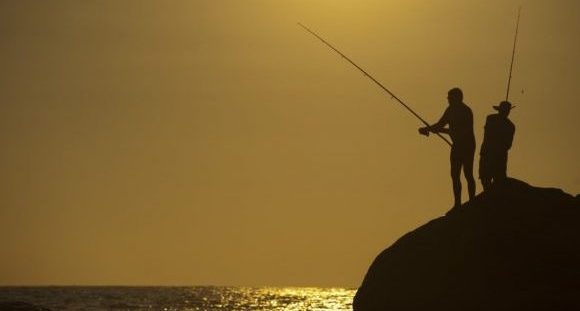Small boat fishing.
Undoubtedly,
the art of fishing is not an exact science and hides several secrets, but all fishermen agree in affirming the decisive influence of the different environmental factors on the results during a fishing day.
The wind, the temperature of the water, the tides, the waves and the clarity of the water, among others, are some of the factors that have a direct impact on this activity, so it is convenient to pay attention to them.
But how do these factors affect fish activity?
Changes in atmospheric pressure trigger, due to more or less rapid ascents or depressions, the presence or absence of winds and the possibility of the appearance of storms or precipitation.
A slow and sustained descent usually announces that there will be wind for a few days, both more intense and prolonged, while a slow and prolonged ascent predicts good weather for the next two or three days.
For its part, a rapid descent predicts wind immediately and should be taken into account especially if we are fishing in a boat, while a rapid rise in atmospheric pressure usually predicts a short-term improvement in weather.
Most species are cold-blooded, which means they are unable to control their internal body temperature by themselves.
As a result of this their metabolism is strongly influenced by the temperature of the water.
There are some species that are capable of controlling said temperature, but they are very few.
Given their cold-blooded nature, fish need to stay in what is known as their comfort zone, which is the area where there is a suitable temperature for their metabolism.
In short,
most species usually carry out their reproductive activity in the warm and temperate months, causing in most cases an increase in the need to feed, either before or after spawning.
The tides, the waves, the wind and the Moon are also influential factors.
Perhaps in certain places they feed at low tide, but the typical thing is that they enter our positions with the rise of the tide, since this allows the fish to approach the barnacles, the crabs or it will simply cover the areas where the arenicolas inhabit.
In general, we advise you to look for calm sea areas to fish, with little wind and, if possible, carry out this activity during the last hours of high tide or the first hours of low tide.
In our country, the presence of spaces dedicated to these issues in the media is not common, although there are provinces that are advanced on the subject.
For example, in Artemisa, with the
Metvisión
program , and in Cienfuegos, with
Tiempo a Su Favor
, they manage to show the weather conditions that could influence this important activity in a diaphanous and subtle way, providing users with the information they need to plan your work.
In this way we are helping to discover the moments in which the catch can behave very beneficially and obtain excellent yields.
Sport Fishing from land.
